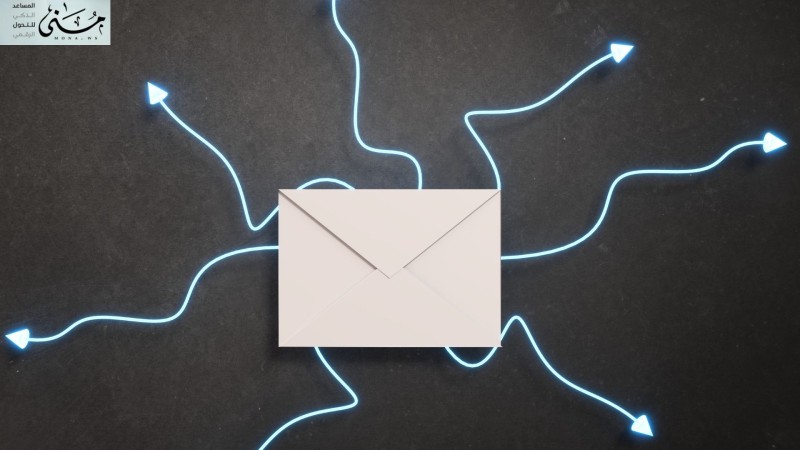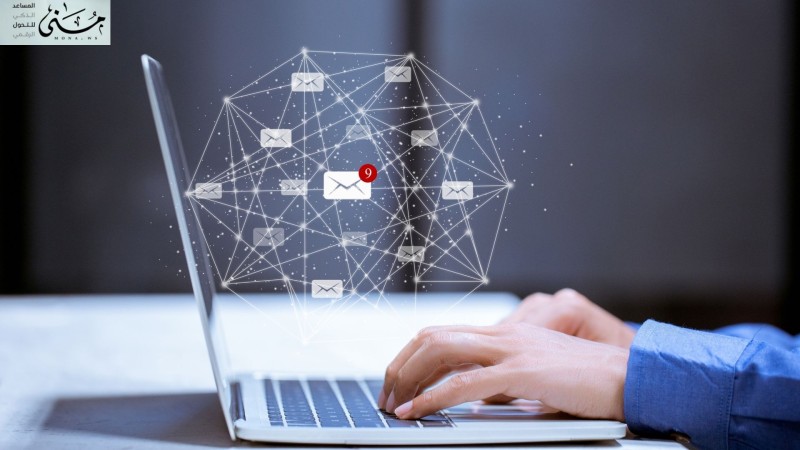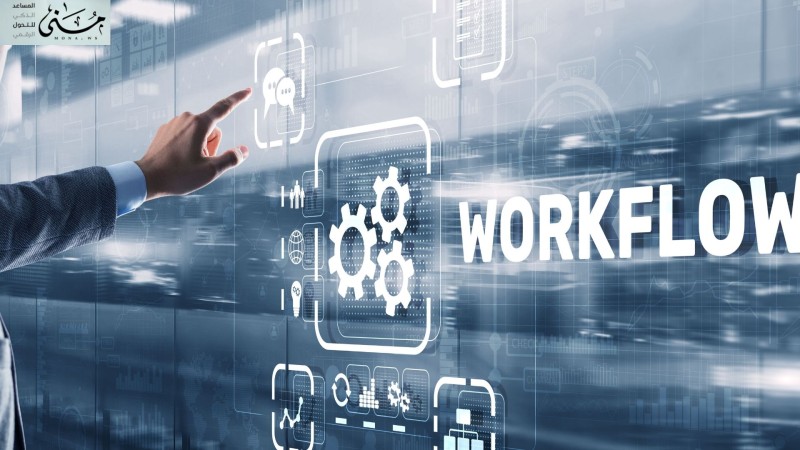While Murad, a startup manager, was suffering from problems in managing incoming and outgoing documents due to the accumulation of paper correspondence and the loss of important documents, he realized that it was time to adopt a modern incoming and outgoing management system that would save his team from chaos and achieve the efficiency he had always dreamed of.
You can continue reading the article to find out more information.
What is the incoming and outgoing management system?
Incoming and outgoing management is defined as an organizational process that aims to manage all correspondence and documents issued by or received by the organization in an organized and effective manner. This management includes all activities related to recording, classifying, tracking, and archiving correspondence, whether paper or electronic, to ensure smooth workflow and achieve efficiency in internal and external communication.
Inbound and outbound management contributes to improving transparency, speeding up procedures, and reducing administrative errors through accurate documentation of information and enabling organizations to quickly access the required data at any time.
In light of the rapid digital transformation and the increasing challenges in managing operations within institutions, the incoming and outgoing management system is the cornerstone in organizing and documenting correspondence efficiently and transparently. The importance of this system is evident in that it represents the link between the various departments within the institution and between it and the outside world, which makes it necessary to invest in its development and adopt the latest technical solutions to improve its performance.

Important statistics about modern correspondence systems
Recent reports indicate that organizations that rely on electronic inbound and outbound management systems achieve savings of up to 30% in time and effort compared to traditional methods.
Adopting an electronic system contributes to reducing printing and paper costs by up to 40% annually.
According to studies conducted by technology organizations, organizations that integrate automation tools into their messaging systems increase their productivity by 25% on average.
About 85% of organizations that used advanced messaging systems reported significant improvements in process accuracy and reduced administrative errors.
These numbers show that investing in an inbound and outbound management system is not just about improving day-to-day performance, but is a strategic step towards achieving organizational efficiency and reducing operational costs.
The development of the incoming and outgoing management system over time
The incoming and outgoing management system has gone through several stages of development over time, namely:
- Starting with paper systems
Initially, organizations relied on traditional paper-based systems to document correspondence, and although they were relatively efficient, they caused many problems such as lost documents, difficulty searching, and file clutter.
- Emergence of electronic systems
As technology evolved, organizations moved to using electronic correspondence systems that relied on computers and simple programs to record and store documents, but these early systems had limited capabilities and were unable to integrate with the rest of the organization's systems.
- Modern Integrated Systems
Today, advanced systems offer integrated solutions for managing incoming and outgoing communications. These systems use artificial intelligence technologies to automatically analyze and classify correspondence, enable integration with human resources, financial, and project management systems, and provide powerful security tools to ensure the protection of sensitive data.
The difference between incoming and outgoing correspondence management
There are several differences between the exported and imported, which we will quickly explain to you in this comparison:
|
The element |
Outgoing |
Incoming |
|
Definition |
Correspondence sent by the organization to external or internal parties. |
Correspondence received by the institution from external or internal parties. |
|
the goal |
Communicating information, decisions, or documents to recipients. |
Receive information, requests, or reports from senders. |
|
Concerned party |
Customers, suppliers, partners, or internal departments. |
Suppliers, government agencies, customers, or partners. |
|
Documentation |
Documenting sending details such as date, sender, and recipient. |
Record receipt details such as source, date, and content of correspondence. |
|
Administrative importance |
Ensure that official messages arrive on time. |
Facilitate follow-up of responses and required actions based on correspondence. |
Advanced systems unify incoming and outgoing management into one platform, ensuring greater efficiency and transparency in administrative processes.
Challenges facing the import and export management system
Despite the great benefits provided by the system, there are challenges facing institutions in implementing or improving it, which are:
Initial costThe cost of purchasing the system and training staff on it can be high, which discourages some small businesses from adopting it.
Cultural changeConverting employees from traditional methods to electronic systems is a challenge, as some may have difficulty adapting to the new technology.
Cyber SecurityAs correspondence moves into cyberspace, the challenges of protecting data from breaches or leaks increase.
Integration with other systemsOrganizations may have difficulty integrating the inbound and outbound system with other systems used within the organization, which can complicate operations rather than simplify them.
Tools and techniques to improve inbound and outbound management
Tools and techniques for improving inbound and outbound management include:
Automation
Automation tools speed up administrative processes such as document classification, notification sending, and transaction tracking.
Encryption and data protection
Encryption is one of the most important tools used to protect sensitive correspondence and ensure that it reaches only authorized people.
Integration Systems
Integration tools allow the incoming and outgoing system to be linked with other systems within the organization, enhancing the consistency of operations and the flow of information between different departments.
Advanced User Interfaces
Easy-to-use interfaces help reduce training time and increase system speed.
Artificial Intelligence Technologies
AI technologies are used to analyze incoming and outgoing data, provide predictive reports, and suggest workflow improvements.
The Inbound and Outbound Management System is not just a regulatory tool, but a strategic investment to achieve efficiency, transparency, and sustainability. By adopting modern tools and technologies, organizations can significantly improve their performance and keep pace with rapid technological developments.

Global systems for managing import and export
Modern inbound and outbound management systems are characterized by their reliance on advanced technologies that help organizations organize their operations and increase their efficiency. The following is a list of the most important global tools and systems used to manage inbound and outbound:
- Microsoft SharePoint
An integrated system from Microsoft for managing documents and correspondence, which allows sharing information between departments and storing and archiving documents easily, and supports integration with the Office 365 suite.
- DocuWare
A leading German document and correspondence management system, providing smart solutions to automate processes and transform paper correspondence into fully electronic ones.
- Laserfiche
A comprehensive document management system, providing innovative solutions to automate incoming and outgoing processes, with advanced data analysis tools.
- SAP Document Management
Company systemSAP is widely used in large companies to manage documents and correspondence and link them with enterprise resource management systems.
- DocSuite
Doc Suite is an integrated solution that covers all types of transactions and correspondence within institutions, whether internal or external administrative. The system is based on four main axes, starting with recording the transaction and archiving it automatically, which ensures its effective organization.
In addition, the system allows easy tracking of transaction referral movement, and offers options for querying and exporting until completion. With DocSuite, decisions can be made regarding transactions, such as saving them or classifying them as general issued, which contributes to improving administrative workflow and ensuring efficiency in processing.
- OpenText Content Suite:
A global system specialized in document and correspondence management, focused on improving operational efficiency and reducing risks related to data management.
- Zoho Docs
A cloud-based document management system that provides solutions for small and medium businesses to easily manage correspondence and organize documents.
- Alfresco Content Services
An open source system that allows flexible management of incoming, outgoing and documents, with support for automation and data analysis.
Managing incoming and outgoing transactions using modern technical tools is essential to improving institutional performance. Most modern systems provide comprehensive solutions that meet the needs of organizations in terms of efficiency, security, and transparency, and are an ideal choice for organizations looking to achieve complete digital transformation.
Amidst rapid technological developments, inbound and outbound management systems have become an indispensable necessity for achieving efficiency and transparency in business. Choosing the right system, such as DocSuite and other global tools, is a strategic investment that contributes to improving administrative processes, reducing costs, and enhancing information security. With these modern systems, organizations can confidently move towards a more organized and effective digital future.
 حُسن إدارة الصادر والوارد بنقل مؤسستك نحو مستقبل رقمي متطور
حُسن إدارة الصادر والوارد بنقل مؤسستك نحو مستقبل رقمي متطور











Comments
Add New Comment